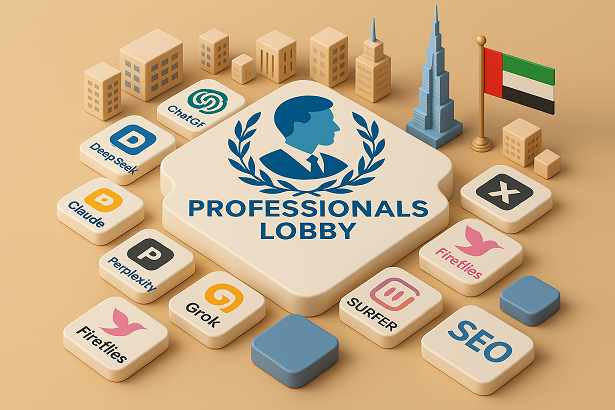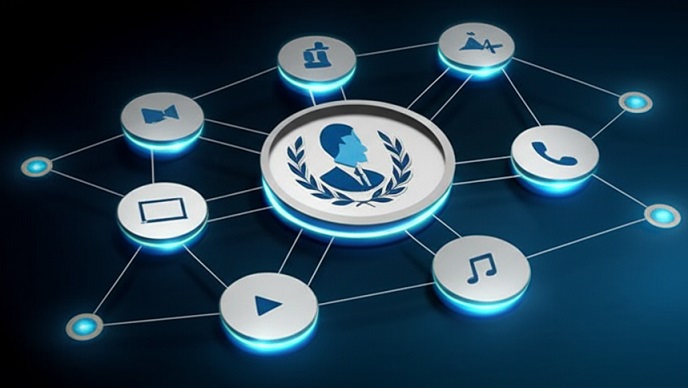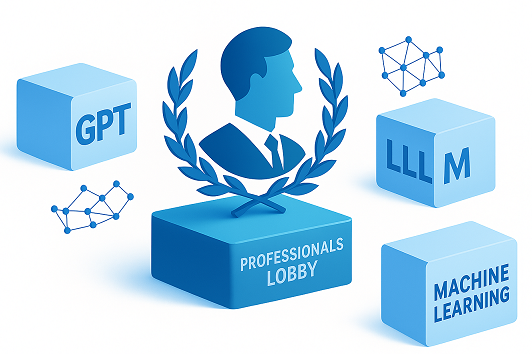The AI landscape is evolving at breakneck speed, with new terms and technologies emerging weekly. This comprehensive guide demystifies 15+ essential AI concepts including GPT, LLMs, AI Agents, and Machine Learning. Whether you're a business leader in Dubai implementing AI solutions or simply AI-curious, this guide will help you navigate the terminology with confidence.
1. Artificial Intelligence (AI)
Definition: AI refers to machines or software that can perform tasks typically requiring human intelligence. These include learning, reasoning, problem-solving, perception, and language understanding.
Common Examples:
- Voice assistants (Siri, Alexa)
- AI chatbots (like ChatGPT)
- AI image generators (DALL·E, MidJourney)
- Fraud detection systems

AI applications now touch nearly every industry from healthcare to finance
UAE Context: The UAE's National AI Strategy 2031 positions the country as a global leader in AI adoption across government and business sectors. AI is transforming industries from Dubai's smart city initiatives to Abu Dhabi's healthcare systems.
2. Machine Learning (ML)
Definition: A subfield of AI focused on algorithms that enable systems to learn from data and improve their performance over time without being explicitly programmed.
Key Types of Machine Learning:
- Supervised Learning: Learns from labeled data (e.g., spam detection)
- Unsupervised Learning: Finds patterns in unlabeled data (e.g., customer segmentation)
- Reinforcement Learning: Learns by trial and error using rewards (e.g., game-playing AI)
Business Application: UAE retailers use ML for personalized recommendations, while banks employ it for credit scoring and fraud prevention.
3. Large Language Model (LLM)
Definition: An LLM is a type of machine learning model trained on massive amounts of text data to understand and generate human-like language.
Popular LLM Examples:
- GPT-4.5 / GPT-4o by OpenAI
- Claude by Anthropic
- Gemini by Google
- LLaMA by Meta
- Jais - Arabic-focused LLM by UAE
Capabilities: Text generation, translation, summarization, reasoning, code writing, and more. Modern LLMs are typically trained on billions to trillions of words from diverse sources.

The training process for large language models involves massive datasets and computing power
4. Generative Pre-trained Transformer (GPT)
Definition: A specific architecture of LLMs developed by OpenAI. "Generative" means it can create content; "Pre-trained" means it learned on vast datasets before fine-tuning.
GPT Evolution Timeline:
- GPT-2 (2019): 1.5B parameters, showed impressive text generation
- GPT-3 (2020): 175B parameters, massive capability leap
- GPT-4 (2023): Multimodal capabilities, improved reasoning
- GPT-4o (2024): Omnimodal (text + image + audio + video)
Use Cases: Chatbots, code generation, AI assistants, content creation, and more. GPT models power ChatGPT and many enterprise AI solutions.
5. OpenAI
Definition: A leading AI research and deployment company behind GPT, DALL·E, and Codex, founded in 2015.
Key OpenAI Products:
- ChatGPT - conversational AI assistant
- DALL·E - AI image generation
- Whisper - speech recognition
- Sora - video generation
- API platform for developers
Mission: Ensure AI benefits all of humanity. OpenAI transitioned from non-profit to "capped-profit" structure to fund ambitious research.
6. Prompt (in AI/LLMs)
Definition: A prompt is the input or instruction given to an AI model to elicit a desired response. It's how users communicate with AI systems like ChatGPT.
Prompt Examples:
- "Write a business plan for a Dubai-based ecommerce startup"
- "Explain quantum computing to a 10-year-old"
- "Summarize this legal document in bullet points"
Advanced Prompt Techniques:
- Prompt Engineering: Crafting prompts to control outputs better
- Chain-of-Thought Prompting: Asking models to reason step-by-step
- Few-shot Prompting: Providing examples in the prompt
7. Prompt Engineering
Definition: The process of designing prompts that guide LLMs to produce high-quality, relevant outputs. It's become a critical skill in the AI era.

Well-crafted prompts can dramatically improve AI response quality
Prompt Engineering Methods:
- Role-based Prompting: "You are a marketing expert..."
- Template Prompting: Using consistent structures
- Iterative Refinement: Improving prompts based on outputs
UAE Application: Professionals Lobby offers AI prompt engineering training to help businesses optimize their AI interactions.
8. Agentic AI / AI Agents
Definition: AI agents are autonomous systems that perform tasks by reasoning, taking actions, and adapting to environments. Agentic AI refers to AIs with more autonomy and reasoning capabilities.
Core Components:
- Planning: Breaking down goals into steps
- Memory: Storing and using past information
- Tools/Actions: Using external services (e.g., web search)
- Autonomy: Minimal human supervision needed
Popular AI Agent Examples:
- AutoGPT - self-prompting AI
- BabyAGI - task-driven agent
- OpenAI GPT Agents (coming soon)
- Microsoft Copilot agents
Business Impact: AI agents can automate complex workflows like customer service, research, and data analysis with minimal human oversight.
9. Multimodal AI
Definition: AI systems that can understand and generate multiple types of data: text, images, video, and audio. This represents the next frontier in AI capabilities.
Multimodal AI Examples:
- GPT-4o: Understands and generates responses based on text + image + audio
- Google Gemini: Processes text, code, images, and more
- DALL·E 3: Creates images from text descriptions
Use Cases: AI video editing from prompts, voice-interactive assistants, image analysis with language explanation, and more comprehensive AI applications.

Multimodal AI can process and connect information across different media formats
10. Fine-Tuning / Custom GPTs
Definition: Fine-tuning is adapting a pre-trained model (like GPT) on a specific dataset or use-case to specialize its performance. Custom GPTs let users build their own AI assistant with unique instructions, tools, and personality.
Fine-Tuning Use Cases:
- Legal document review trained on law firm's templates
- Medical diagnosis assistant with latest research
- Arabic language customer support bot
UAE Example: Dubai government has created custom GPTs trained on official documents to assist citizens with accurate information about services and regulations.
11. Retrieval-Augmented Generation (RAG)
Definition: A method where the AI pulls relevant documents or data from external sources before generating a response, ensuring factual accuracy and up-to-date information without retraining the model.

RAG architecture combines retrieval from knowledge bases with generative AI
Where RAG is Used:
- Enterprise AI agents accessing company documents
- Knowledge-based chatbots for customer service
- Research summarization tools
- Medical diagnosis systems
12. Embeddings
Definition: Numerical representations of text, images, or other data in vector space, allowing AI to compare similarities and understand relationships between concepts.
Embedding Applications:
- Semantic search - finding documents that "mean" the same thing
- Recommendation systems
- Anomaly detection
- Clustering similar content
Example: UAE e-commerce sites use embeddings to show products similar to what customers browse, even if search terms don't exactly match.
13. Inference
Definition: The act of running a trained AI model to get outputs (answers, predictions, responses). This is when the AI applies what it's learned to new inputs.
Key Distinction:
- Training: The learning phase where model improves from data
- Inference: The application phase where model generates outputs
Cost Factor: Inference typically requires less computing power than training, but for large models it can still be expensive, driving innovations in efficient inference techniques.
14. AGI (Artificial General Intelligence)
Definition: A hypothetical form of AI that can perform any intellectual task a human can do, with reasoning and adaptability across domains. Unlike narrow AI (which excels at specific tasks), AGI would have general problem-solving abilities.

AGI would represent a qualitative leap beyond today's specialized AI systems
Current Status: Not yet achieved, but many believe systems like GPT-4o are early steps toward AGI. The UAE's MBZIRC is actively researching AGI development.
15. RLHF (Reinforcement Learning from Human Feedback)
Definition: A training method where human feedback is used to align AI outputs with human values and preferences. This helps make AI responses more helpful, safe, and ethical.
RLHF Process Steps:
- Initial model training on large dataset
- Human reviewers rank different model outputs
- Model learns to prefer human-approved responses
- Iterative refinement of preferences
Importance: RLHF is why ChatGPT refuses harmful requests and tries to be helpful. Without it, AI might generate toxic or dangerous content more often.
Key Differences Between AI Terms
| Term | What It Refers To | Key Distinction |
|---|---|---|
| AI | Intelligence shown by machines | Umbrella term covering all machine intelligence |
| ML | AI that learns from data | Subset of AI focused on learning algorithms |
| LLM | Large neural networks for language | Specialized for text understanding/generation |
| GPT | A specific LLM architecture | Developed by OpenAI using transformer design |
| Prompt | Instructions to AI | User input that elicits model responses |
| Agentic AI | Autonomous, goal-driven AI | Can plan and execute multi-step tasks |
| Multimodal AI | Uses more than just text | Processes images, audio, video along with text |
| AGI | Human-level AI | Theoretical general intelligence across domains |
Key Takeaways
The AI landscape includes specialized terms that build upon each other - from broad concepts like AI and ML to specific implementations like GPT and RAG.
Understanding these differences helps businesses:
- Make informed decisions about AI adoption
- Communicate effectively with technical teams
- Identify the right AI solutions for specific needs
- Stay ahead in the rapidly evolving tech landscape
Need Help Implementing AI in Your UAE Business?
Professionals Lobby offers AI strategy consultations to help businesses select and deploy the right AI solutions for their specific needs.
Schedule AI Consultation